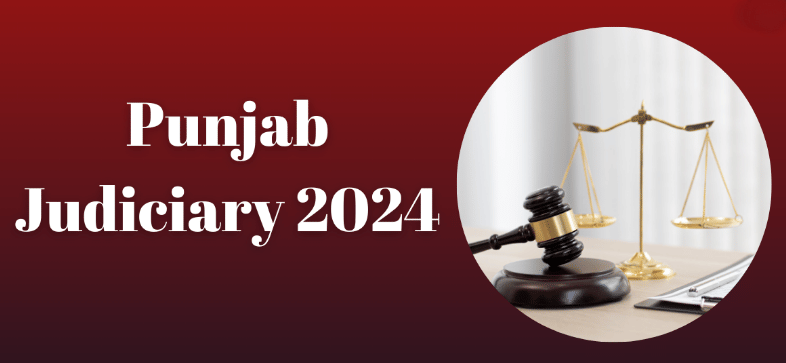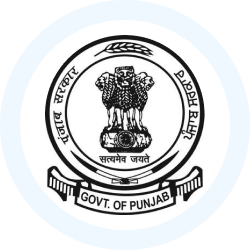Punjab Judiciary | Punjab State (PPSC) PSC: Preparation - PPSC PCS (Punjab) PDF Download
Introduction
The High Court is the top court in the state, made up of a Chief Justice and several other judges. There are two types of jurisdictions: Original Jurisdiction and Appellate Jurisdiction. The High Court has the power to issue writs for enforcing Fundamental Rights and to resolve disputes related to Union and State legislation and elections under its Original Jurisdiction.

Before India gained independence, a High Court was set up on March 20, 1919, in Lahore for the provinces of Punjab and Delhi, known as the High Court of Judicature. This court was a court of record, meaning it preserved records of all proceedings. The establishment of the Lahore High Court led to the abolition of the Court of Punjab, which had been functioning for 53 years.
After India gained independence, the province of Punjab was divided into West Punjab (Pakistan) and East Punjab (India). Consequently, the High Court in Lahore lost its control over Delhi and East Punjab. Shimla was chosen as the new seat for the High Court, and the East Punjab High Court of Judicature was established in Shimla on August 15, 1947, by the Governor-General under the Indian Independence Act, 1947. This court was a court of record and had jurisdiction over Punjab and Delhi.
The creation of Himachal Pradesh on August 15, 1948, led to the establishment of a separate Judicial Commissioner’s court (similar to a High Court) for that state, reducing the jurisdiction of the Punjab Court. On January 15, 1955, the High Court’s seat was moved to Chandigarh to make it more accessible for litigants, as traveling to Shimla had become inconvenient due to the cold winter weather.
Merger of PEPSU High Court with Punjab High Court
The States Re-organisation Act of 1956 led to the merger of PEPSU (Patiala and East Punjab State Union) into the state of Punjab. PEPSU had its own High Court in Patiala, but after the merger, the PEPSU High Court was dissolved, and its judges became part of the Punjab High Court.
Creation of Delhi High Court
- A separate High Court for the Union Territory of Delhi was established under the Delhi High Court Act of 1966. This new court was officially constituted on October 31, 1966, with three judges transferred from the Punjab High Court.
Establishment of the High Court of Punjab and Haryana
- On November 1, 1966, the state of Haryana and the Union Territory of Chandigarh were formed. Following this, the High Court of Punjab was renamed the High Court of Punjab and Haryana. The judges from the High Court of Punjab retained their positions and powers in the new High Court, which continued to operate from its principal seat in Chandigarh. Since its establishment, the High Court of Punjab and Haryana has functioned in this capacity, with a sanctioned strength of 38 permanent and 30 additional judges.
Chief Justices of the High Court of Punjab and Haryana
- Ramlal was the first Chief Justice of the High Court of East Punjab after independence, serving from August 15, 1947, to January 18, 1949. Mehar Singh was the Chief Justice when the Punjab High Court was renamed the High Court of Punjab and Haryana in 1966. Krishna Murari has been serving as the Chief Justice of the High Court of Punjab and Haryana since June 2, 2018.
Jurisdictions of the High Court
- The High Court of Punjab and Haryana holds original jurisdiction in cases related to admiralty, probate, matrimonial matters, and contempt of court. Its appellate jurisdiction covers both civil and criminal cases. Additionally, the High Court has supervisory authority over all courts and tribunals in Punjab and Haryana. Its proceedings and decisions are authoritative and cannot be contested by subordinate courts.
District and Subordinate Courts in Punjab
District Courts in Punjab have the authority to handle both original and appellate cases in civil and criminal matters within the district. These courts also oversee appeals from subordinate courts in the district for both civil and criminal cases.
On the civil side, the subordinate courts, in ascending order of authority, are:
- Junior Civil Judge (JCJ) Court
- Principal Junior Civil Judge Court
- Senior Civil Judge Court
On the criminal side, the subordinate courts, in ascending order, are:
- Second Class Judicial Magistrate Court
- First Class Judicial Magistrate Court
- Chief Judicial Magistrate Court
There are a total of 21 district courts in Punjab, located in the following districts:
- Amritsar
- Barnala
- Bathinda
- Faridkot
- Firozpur
- Gurdaspur
- Hoshiarpur
- Fatehgarh Sahib
- Jalandhar
- Kapurthala
- Ludhiana
- Mansa
- Moga
- Pathankot
- Rupnagar
- SBS Nagar
- Sangrur
- Shri Muktsar Sahib
- SAS Nagar
- Tarn Taran
Punjab Public Service Commission
The Punjab Public Service Commission (PPSC) was established in 1937 under the Government of India Act, 1935. Initially based in Shimla, the PPSC had jurisdiction over the province of East Punjab, which included areas such as Patiala, Jind, Nabha, Kapurthala, Faridkot, Kalsia, Malerkotla, and Nalagarh.
In 1956, following the merger of Punjab and the Patiala and East Punjab States Union (PEPSU), the commission moved to Patiala. However, on November 1, 1966, its territorial jurisdiction was reduced due to the formation of the new states of Haryana and Himachal Pradesh.
Appointment and Tenure of Members
- The Chairman and members of the State Public Service Commission are appointed by the Governor. In the case of a Joint Commission, the President makes the appointments.
- To ensure experienced leadership, half of the commission's members must have at least 10 years of service in the government.
- Members serve a term of six years or until they reach the age of 62, whichever comes first.
- The Chairman of the State Public Service Commission is eligible for appointment as Chairman or a member of the Union Public Service Commission (UPSC) or as Chairman of another State Public Service Commission.
Functions of the Punjab Public Service Commission
The main functions of the Punjab Public Service Commission include:
- Recruitment: The Commission conducts examinations for appointments to the services of the Union and the State, based on interviews, screening tests, and promotions.
- Advice: The Commission can provide advice on any matter referred to it by the Governor of the State, as per Article 320.
- Annual Report: The Commission presents an annual report to the Governor detailing its work, as per Article 323.
|
23 videos|50 docs|47 tests
|
FAQs on Punjab Judiciary - Punjab State (PPSC) PSC: Preparation - PPSC PCS (Punjab)
| 1. What is the significance of the merger of PEPSU High Court with Punjab High Court? |  |
| 2. What types of cases are handled by the District and Subordinate Courts in Punjab? |  |
| 3. What role does the Punjab Public Service Commission (PPSC) play in the state? |  |
| 4. What are the main functions of the Punjab Public Service Commission? |  |
| 5. How does the PPSC PCS (Punjab) exam affect career opportunities in Punjab? |  |
















